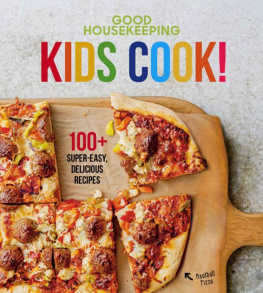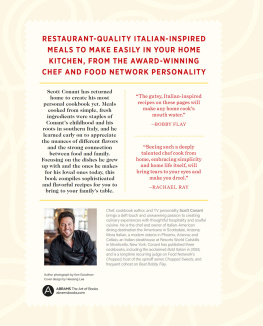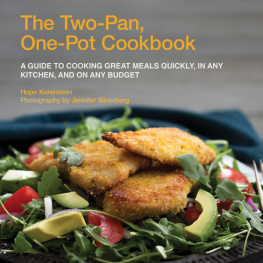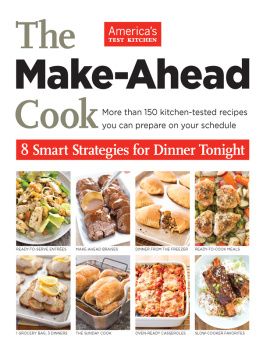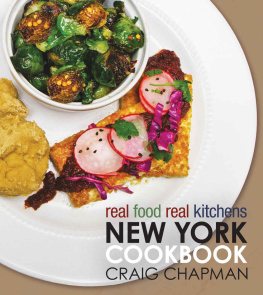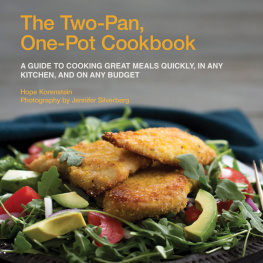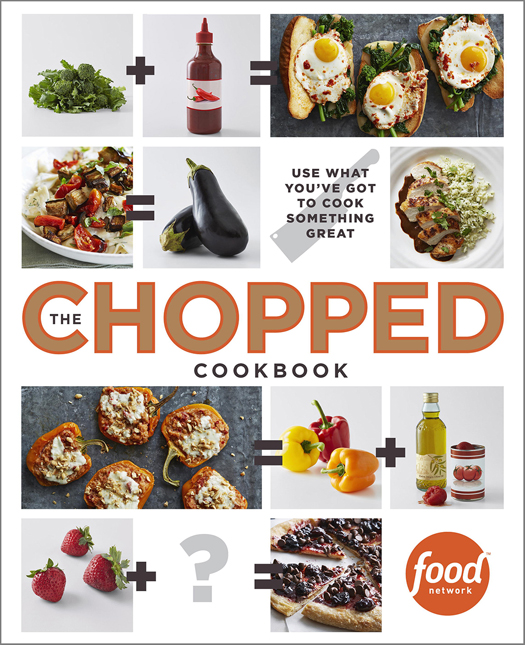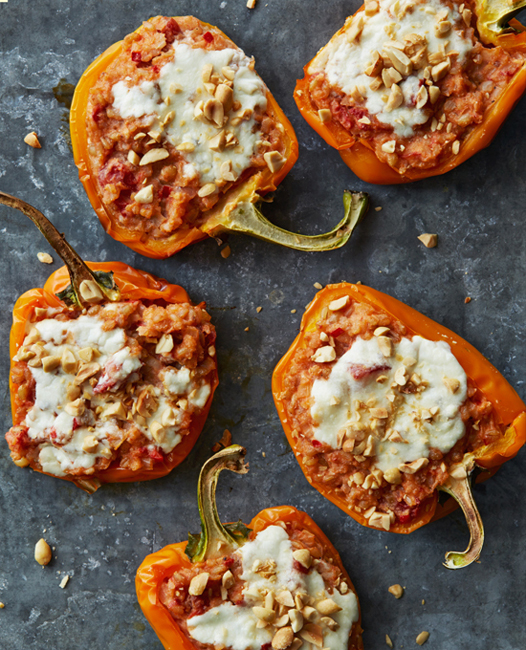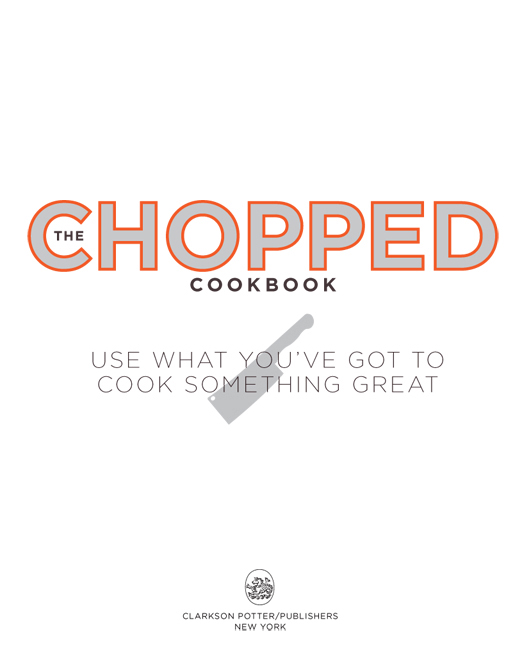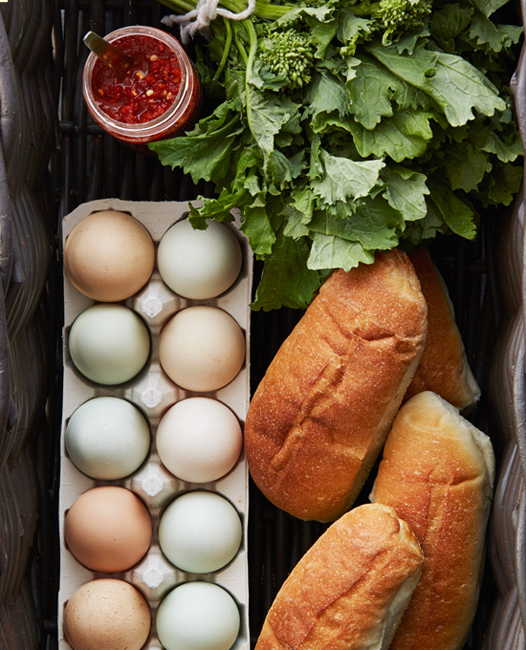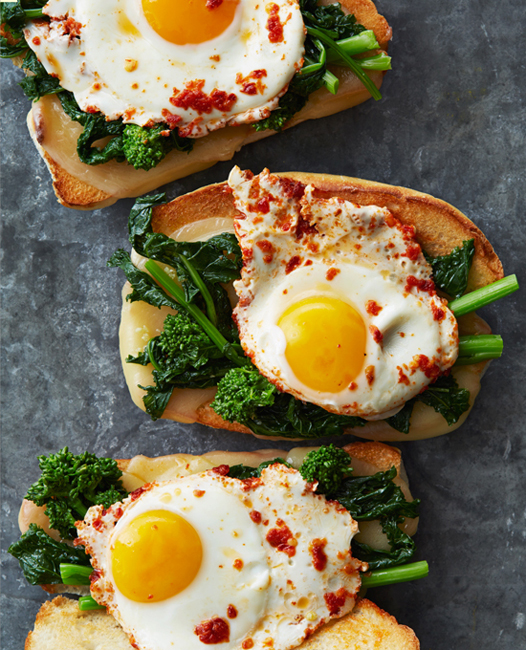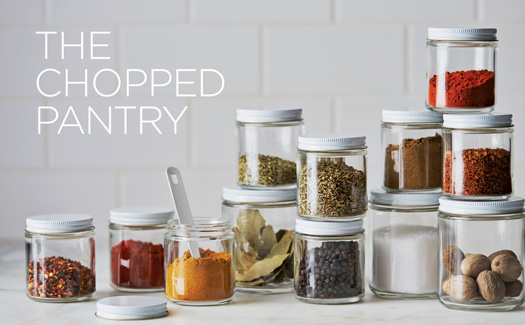Copyright 2014 by Television Food Network, G.P.
All rights reserved.
Published in the United States by Clarkson Potter/Publishers, an imprint of the Crown Publishing Group, a division of Random House LLC, a Penguin Random House Company, New York.
www.crownpublishing.com
www.clarksonpotter.com
CLARKSON POTTER is a trademark and POTTER with colophon is a registered trademark of Random House LLC.
FOOD NETWORK and associated logos and CHOPPED and associated logos are trademarks of Television Food Network, G.P. in the United States and/or other countries. Used under license.
Library of Congress Cataloging-in-Publication Data
The chopped cookbook / Food Network Kitchen. First edition.
pages cm
Includes index.
(hardback) 1. Cooking. I. Food Network (Firm)
TX714.C494 2014
641.5dc23 2013037025
ISBN 978-0-7704-3500-4
eBook ISBN 978-0-7704-3501-1
Book design by Jennifer K. Beal Davis for Ballast Design
Jacket design by Marysarah Quinn
Photography by Armando Rafael Moutela
v3.1
CONTENTS
INTRODUCTION
A CHOPPED COOKBOOK? Like the Food Network show where chefs make three dishes in almost no time with crazy ingredients? Well, sort of. Weve all been thereyou open your fridge on a Tuesday night to be faced with ground turkey, a pineapple, and seafood seasoning, along with thirty minutes or so before dinner needs to be on the table. (For that particular combo, turn to find the recipe for .)
But this book does away with the fish heads and gummy worms and, instead, focuses on ingredients most Americans tend to buy every week at the supermarket. It boldly aims to solve the nightly whats for dinner? conundrum and help you get excited about boneless chicken breasts again.
Thats what were here for. Our Food Network Kitchen is made up of chefs, stylists, recipe developers, researchers, and all-around food nerdswere the culinary engine behind your favorite Food Network shows and websites, plus the magazine, wines, restaurants, cooking tools, and more. Were the ones who select the baskets of ingredients for the hit show Chopped, and we make sure that each basket, no matter how wacky, has many delicious potential outcomes.
The thrill of peering into the refrigerator to see what youve got for dinner was the original inspiration for Chopped. Twenty-one seasons later, weve seen some amazing cooking and enormous ingenuity under pressure. This book is our way of bringing all of that back home, only with ingredients most of us usually have on hand. The joy of Chopped comes from watching talented chefs be inspired by the food in front of them. Were hoping that this book gets you inspired as well.
In these pages, youll find new and tasty ways of looking at your groceries, with challenges sprinkled throughout, plus a ton of things to do with that one vegetable left in your crisper at the end of the week and behind-the-scenes insight from your favorite Chopped judges. We held grueling twice-a-day tastings (yeah, its a tough job) and battled it out until we agreed on the best, most doable, and delicious recipes. Tucked into each chapter is a bonus section: a few ways to spin an old favorite, a chart of mix-and-match sauces or dressings, or a market basket challenge, where we gave teams a four-item basket and then devoured the different results.
So use this book to help you look at familiar ingredients in new waysand, most important, to have fun while getting a delicious dinner on the table.
CHEFS, OPEN YOUR BASKETS!
The Chopped show pantry is vast and deep; it includes seven vinegars, three different kinds of gelatin, and five kinds of salt. You dont need all that. What you do need (and what were here to help with) is a sense of how foods work, and how one ingredient can be substituted for another, so you can use what you have on hand to cook what you want to make.
We want you to feel comfortable improvising. To that end, weve organized our pantry a bit differently. So while our Basics category is straightforward, the majority of these groupings (like Richness and Crunch) function more as a guide to an ingredients role in a dish. If something calls for almonds, but youre out of them, you can swap in peanuts or pumpkin seeds for crunch instead. If theres a salmon steak recipe you want to try but the market is all out of salmon, try it with a different fish. If you love sour cream but dont love Greek yogurt, by all means use sour cream! And if a recipe calls for lemon juice and you feel like mixing it up, try cider vinegar or even pickle juice. If you think, Hmm, this could be a little brighter, then you know anything under Acidity will work to bring that to the table. Consider this permission to play with your food; you just might invent your next family classic with a secret ingredient.
Finally, just to reiterate: You definitely dont need every single thing on this list.
WHAT MAKES A WINNING DISH?
When we judge a recipe in the kitchen its not just about taste. Its about the ingredients themselves and how they play off each other. Its a question of texture, balance, color, chemistry, and surprise. For example: Creamy + a touch of acidity = balanced richness (like cream sauce with a squeeze of lemon on pasta). Tart + fruit or herbal = bright (like lemon juice and oil on salad greens). Vegetables with a swirl of lushness = smooth and rounded (like mashed potatoes with melted butter). Crunchy + juicy = comforting (like battered onion rings).
BASICS
Eggs , large
Milk , whole or 2%
Unsalted butter (wed rather add the salt ourselves)
Oil , including extra-virgin olive oil (for dressing) and vegetable oil (for cooking)
for options)
Salt , both fine (for baking) and kosher (for everything else)
Black peppercorns (buy whole ones and grind as you go)
Flour (see )
Sugar (see )
Potatoes , red or russet
Garlic
Ginger
Bell peppers
Carrots
Celery
Onions or scallions



